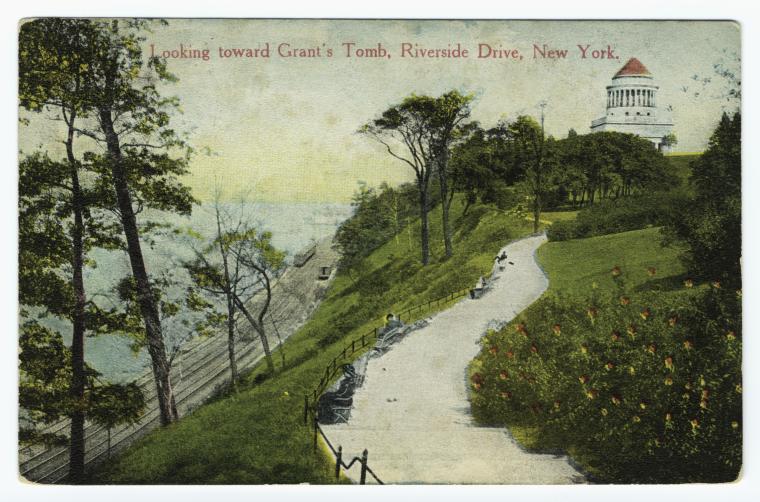 Image from New York Public Library
Image from New York Public Library
Last week, a reader contacted us about our article on the “Staircase to Nowhere” in Riverside Park. He asked,
I’ve often wondered about the history of the railroad tracks and the park. Did the park once go down to the river and the train was put in later? Were these stairways to planned railroad stations below the Soldiers & Sailors Monument and Grant’s Tomb?
We did some digging and asked some NYC history experts.
In 1851, the Hudson River Railroad began taking passengers. The area around the railroad was undeveloped at this time. In 1910, primary construction of Riverside Park was completed by Frederick Law Olmstead, Calvert Vaux and Samuel Parsons. In the 1930s, Robert Moses covered the New York Central Rail Line and built Henry Hudson Parkway.
We asked an expert on Riverside Park, author David Freeland of Automats, Taxidances and Vaudeville. He’s researched the history of the railroad tracks in Fort Washington Park, further north than the photo in question. Nonetheless, he says, it’s the same railroad tracks in both areas:
With Fort Washington Park, I was also trying to determine which came first – railroad or park. It turned out that the train pathway dates all the way back to the 1840s; the tracks that run along the west side of the island, up through Riverside and Fort Washington Park, were among the first in the entire state (Hudson River Railroad). In Fort Washington Park, there is a deep railway cut made into a large hill, and a very old footbridge crossing it, that date from that time – long before the surrounding land was designated as a park. It’s safe to say that the tracks definitely predate it.
Untapped Cities writer Benjamin Waldman also believes some of the staircases to nowhere were from the original Riverside Park, but became cut off because the Henry Hudson Parkway was a later addition to the park. Most of the metal staircases, like our Staircase to Nowhere, come from the Robert Moses era.
As for the question about planned railway stations in Riverside Park, we couldn’t find any reliable information about them. We do know that Robert Moses’ West Side Improvement Project from 1934 actually took away 105 railroad crossings at grade and the railroad tracks were covered north of 72nd Street. An original vision for Grant’s Tomb shows a monumental stair that goes down to a boat landing. The train tracks are covered by the a tunnel beneath the stair in this design. If you have more information about these possible stations, contact us!
Today, the aforementioned covered tunnel from 72nd to 120th Streets is known as dubbed the Freedom Tunnel,a popular urban exploration and street art hotspot.
Write to the Untapped Mailbag at [email protected] or through our contact page.





